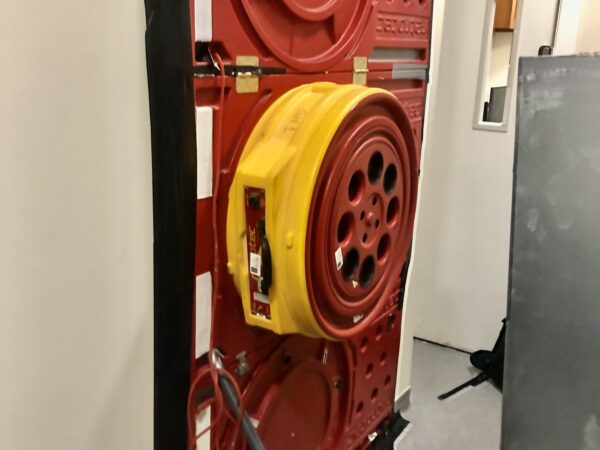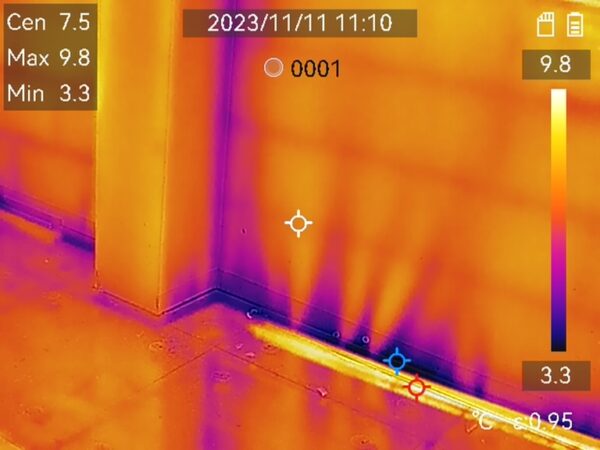The importance of air tightness testing your smoke shaft to ensure it meets building regulation standards is incredibly important. in simple terms an airtight smoke shaft can help to save lives.
Having a leaky smoke shaft air test can have several serious consequences, here are just a few:
- Poor Smoke Extraction: If the smoke shaft is not airtight, it may not effectively extract smoke during a fire, leading to reduced visibility and hindering evacuation efforts.
- Non-Compliance with Building Regulations: Building regulations often require smoke shaft testing. Failure to comply can result in legal penalties, fines, or closure of the building.
- Negating Building Insurance: Insurance policies may require compliance with safety standards. If smoke shafts are not tested, claims related to fire damage might be denied.
- Increased Risk of Fire Spread: Properly functioning smoke shafts help contain smoke within designated areas. A failure could lead to rapid smoke spread, affecting more areas and escape routes.
- Potential Health Hazards to Occupants: Inadequate smoke extraction can expose occupants to toxic fumes, leading to respiratory issues or even fatalities.
- Emergency Response Issues: Firefighters rely on functioning smoke shafts to manage smoke and heat. Non-operational shafts can hinder their efforts and jeopardize both occupants and responders.
Regular testing and maintenance of smoke shafts are essential to ensure they function correctly and to mitigate these risks. It’s also important to address any issues identified during testing promptly to ensure the safety of the building and its occupants.

Improving the air tightness of your smoke shaft
If your smoke shaft fails its air tightness test don’t panic, there are many ways APT Sound Testing can help you address the issue:
- Identify the Air Leakage Paths: We use smoke testing and thermal imaging to locate the exact points where air is leaking from the shaft. This involves pressurising the shaft and then filling it with smoke to visually identify the leakage paths.
- Seal the Leaks: Once you’ve identified the leaks, use appropriate sealants like mastic, expanding foam, or fireproof sealants to close the gaps. Pay special attention to joints, penetrations, and the areas around door frames.
- Check Equipment Installations are airtight: Ensure that all equipment, such as AOVs (Automatic Opening Vents) door frames and Mechanical and Electrical installations has been installed correctly with robust air sealing. Expanding foam should not be used to seal these areas, wherever possible ensure they are properly sealed by licenced fire proofers who also supply certification of their sealing works.
- Consult with APT your Air Tightness Testing Experts: If the smoke shaft and remedial work is complex, consider hiring a consultancy with expertise in smoke shaft systems to advise on the best solutions. APT Sound Testing has undertaken hundreds of air leakage surveys throughout the London and the UK and can help you achieve a test pass with minimal fuss.
- Retest the Smoke Shaft: After the remedial sealing works are completed, retest the shaft to ensure it now meets the required airtightness.
If you would like to know more about smoke shaft air tightness testing, please visit some of our other helpful articles such as why you undertake smoke shaft air testing and/or how to best prepare your smoke shaft as these can be invaluable for learning about the why, and how of smoke shaft testing. Also, to ensure you stay within the realms building safety, it would be worth reading about the consequences of not testing your smoke shaft, as well as what building regulations and standards are applicable.

We can help with the Air Tightness Testing to your Smoke Shaft
There are many reasons why you should use APT to undertake air tightness testing to your smoke shaft. Firstly, our experienced engineers have over 10 years in the field of smoke shaft testing, so we know how to help clients to pass their testing to achieve smoke shaft signoff.
Our premium smoke shaft testing service includes:
- Smoke shaft survey visits by experienced consultants.
- We are a UKAS and ATTMA Level 2 air testing company.
- Smoke shaft air test certification.
- The latest high-powered fan equipment
- UKAS calibrated equipment.
- Diagnostic leakage surveys testing using smoke machines & thermal imaging.
- Rapid testing service
We offer leading design, consultancy, and compliance for every part of your project. It’s APT’s aim to provide a friendly and professional stress-free experience.
For more information on our air testing services for smoke shafts, please contact Darren direct on 07775 623464, or email us at info@airpressuretesting.net
